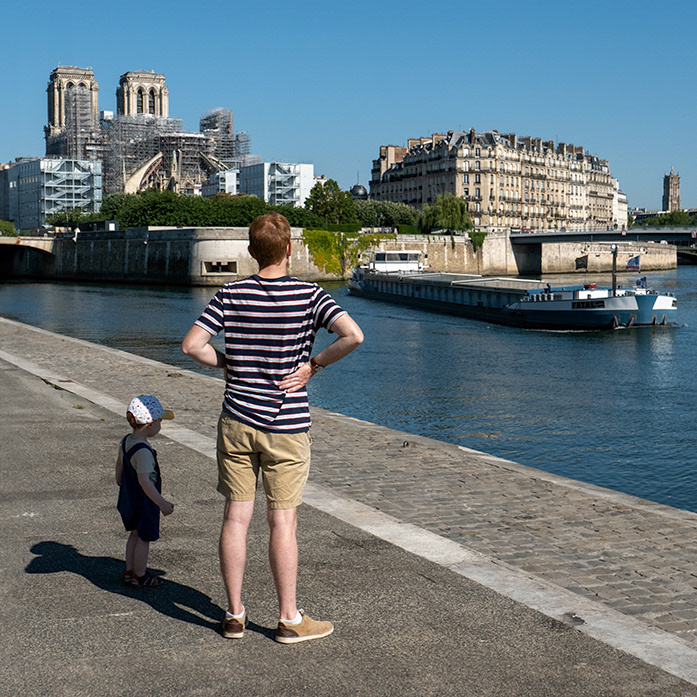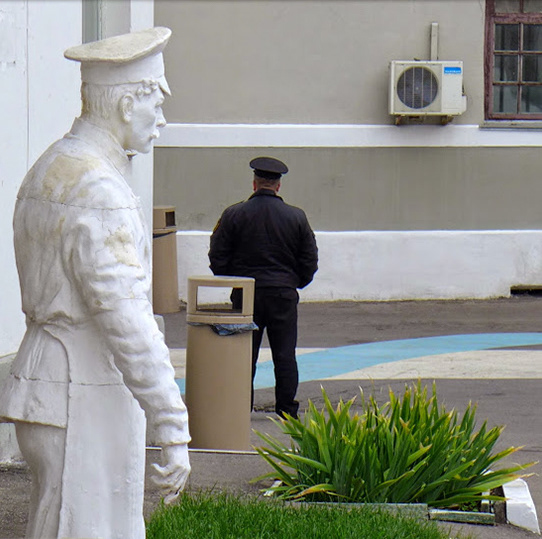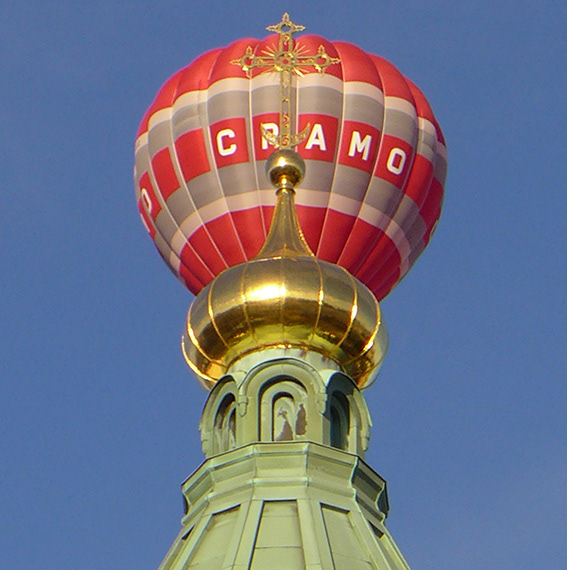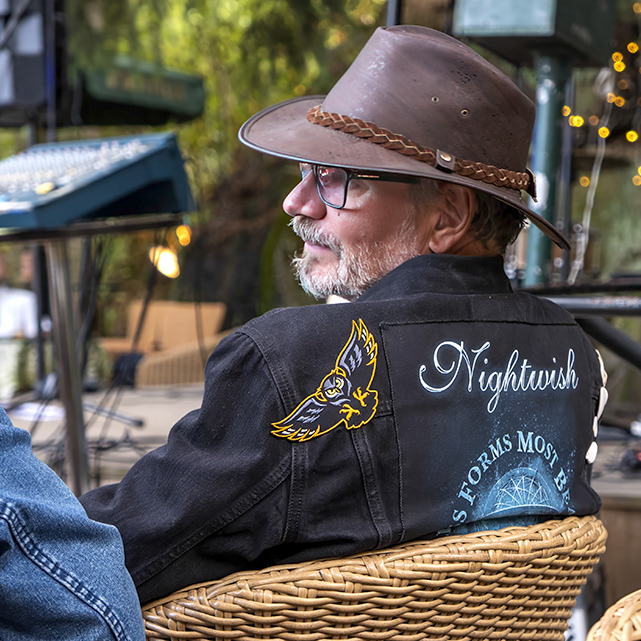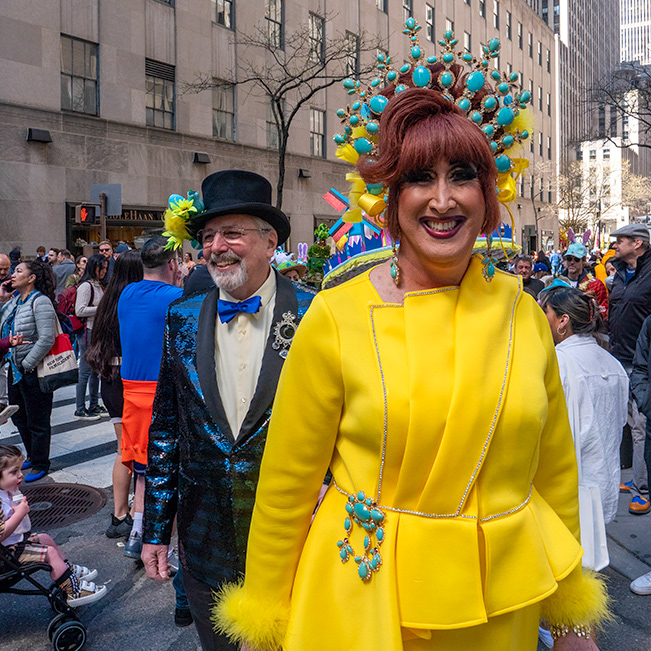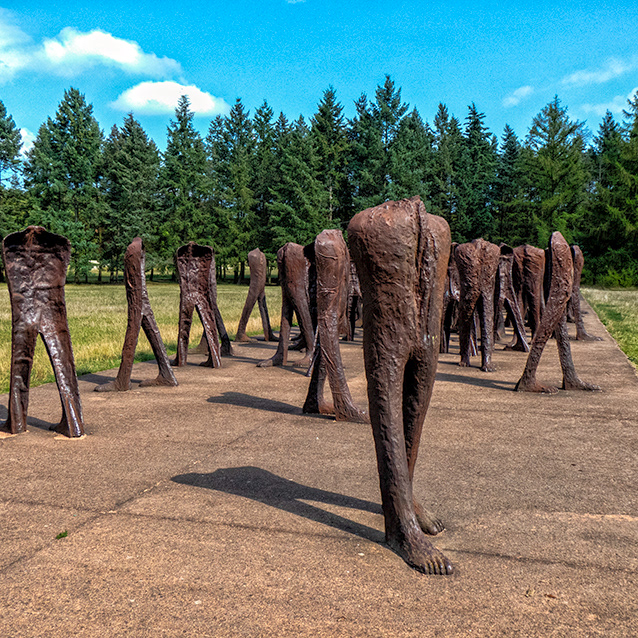In place of party slogans a new western brand appears on the hoarding behind the monument to revolutionary poet Vladimir Mayakovsky.
Fallen monuments – statues of leading Soviet figures removed from their sites in the city after the 1991 coup and deposited in the grounds of the Central House of Artists, April 1992.
International technical assistance experts, working at the head office of the new Federal Employment Service on 1st Basmanny Lane in 1992, found themselves labouring each day under the watchful gaze of the founder of the Soviet Union and the slogan: "The name and deeds of V.I. Lenin will live forever”.
Muscovites selling goods on Okhotny Ryad in March 1992 following a presidential decree lifting all restrictions on trade. The line stretched from Lubyanka Square to the Bolshoi Theatre.
A new street kiosk on Novy Arbat on St Patrick’s Day, March 1993.
Advertising shares in the Ponzi scheme MMM, 1994.
Discarded banana skins near the entrance to Gorky Park, summer 1992. Formerly in shortage, the banana was symbolic of rediscovery of long-lost pleasures.
Under a banner advertising the sale of a penthouse, members of the “Working Russia” party march in support of a return to the Soviet Union, Victory Day, 1993.
Demonstrators outside the Lenin Museum. The placard protests against “Incendiaries who inflame civil war!” and calls on “ Jewish-Fascist occupants who mock from the TV screen” to “Return our TV to Russia and go to Israel”.
Under the heading “We are building a new Russia”, a government banner advises Muscovites how to vote in the April 1993 referendum on constitutional reform. The answers – “Yes, Yes, No, Yes” – refer to the four questions on the voting paper.
An Orthodox priest uses a loud hailer to spread the word on the streets.
Novospassky Monastery was in a poor state of repair when first handed back to the church in 1993 and there was some understandable wariness of a stranger with a camera.
New religions arrived, but the Hari Krishna Temple's members found their traditional uniforms unsuited to winter conditions on the Arbat.
Old Soviet era fixtures and fittings went on the scrapheap as Muscovites began to refit their flats with imported goods and designs.
Manezh Square Shopping Centre, which opened in 1997, included figures from Russian fairy tales sculpted by Zurab Tsereteli, whose work was much loved by Mayor Luzhkov but divided opinion sharply among residents and visitors.
Screen showing the orbital pattern of the space station Mir, “Star City”, October 1992.
Western soap opera arrives on Russian television stations. Staff in the “Izmailovo” hotel gather in reception to watch today’s episode of the Mexican soap opera “The Rich Also Cry”, 1992.
Builders working on a new restaurant, “Zelenii Stol” (“Green Table”), 1995.
A domestic poster for the US classic movie “Gone With The Wind” at the “October” cinema. Novy Arbat, 1992.
Statues at old Lokomotiv stadium, August 1992.
Two generations celebrate on Victory Day.
Zebra in temporary enclosure, Moscow Zoo.
A GAI officer on Okhotny Ryad watches traffic bearing down on him from the direction of Lubyanka and the Metropol hotel.
The city's eclectic mix of architecture and styles.
Ice Fisherman on the frozen Moscow River drainage canal,, December 1992.
Early design for future commercial and business centre “Moscow City”, at “Moskomarkhitektura” (Moscow Committee for Architecture and Urban Planning).
A new city rises above the old. “Moscow City” business centre looms over the Garden Ring and Krimsky Most, 2012.

